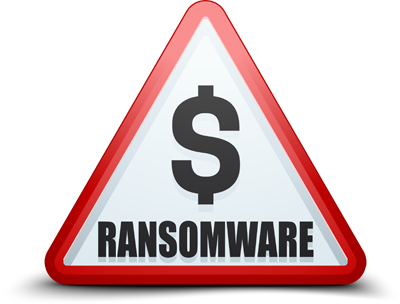Typically, Ransomware keeps you from accessing your information by encrypting it (e.g. CryptoLocker) or by continuously displaying threatening messages on you PC until a ransom is paid.
Ransomware was introduced almost 25 years ago. One of the first examples was called Aids Info Disk or PC Cyborg Trojan. This Trojan horse would encrypt all of the filenames on the "C" drive, making the PC unusable. Once the PC was infected, this Ransomware would demand a payment of $189 be sent to a post office box somewhere in Panama. Eventually the Aids Info Disk Trojan's author was arrested and charged with 11 counts of blackmail. 
What's Happening Now?
Antivirus software makers learned how to detect this category of malware and quickly block them for many years. However, the growing popularity of virtual currencies, such as Bitcoin, have made these types of attacks a potentially lucrative opportunity for Cyber Criminals. Today, the victim is told to make a payment via Bitcoin to the hacker if they ever want to see their information again. The only sure thing is that the money will be taken.
New types of Ransomware are appearing faster than ever before and are taxing the abilities of the Antivirus Software providers to keep up with the latest exploits.
The latest threat is called Ransom32, ransomware-as-a-service. The potential cyber-criminal pays a fee to customize and uses this ready-made platform instead of developing his own. The service providers charge a fee to use their product, or take a percentage of the profits. Expert skills are no longer required to hold a victims' information hostage.
It is Not Just PCs Anymore!
Ransomware has branched out beyond Windows PCs to infect Android mobile devices and even Network Attached Storage (NAS) devices. Over the past 6 month almost 300 new malware variants, impacting Android devices, have been detected.
A highly specialized attack, designed to encrypt the information stored on a Synology Network Attached Storage device began to attack. This type of attack, took advantage of a vulnerability in the device's software to take control of the stored information.
How Do You Protect Yourself from This Threat?
- Be Aware: Every employee at the organization should understand how this threat works and be conscious to malicious activity.
- Perform regular backups of all critical information to limit the impact of data or system loss.
- Ideally, critical information should be kept on a separate device, and backups should be stored offline.
- Your IT department can help you select the most effective back-up solution.
- Maintain updated anti-virus software.
- Make sure you have a strong anti-malware solution which is constantly updated with new signatures and new types of malware. It should be deployed on all workstations and laptops.
- Keep your operating system and software updated with the latest patches.
- Do not follow unsolicited web links in email.
- Use caution when opening email attachments.
- Follow safe practices when browsing the web.